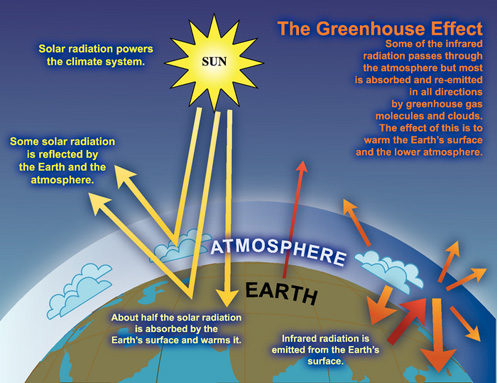The Climate Science
The effect of greenhouse gas emissions, particularly carbon dioxide (CO2), on our climate has been extensively studied for decades. Simply put, the billions of tons of these pollutants being dumped into the atmosphere each year trap heat and prevent it from escaping to space, warming the planet.[1] The US National Academy of Sciences , the US Environmental Protection Agency , the United Kingdom’s science academy, the Royal Society , and the Intergovernmental Panel on Climate Change have all presented a more detailed explanation of the greenhouse effect and climate science.
Increasing global temperatures and the extreme events they cause have far-reaching consequences. Californians face particular challenges:
- Sea level rise, with related flooding and erosion of coastal areas and damage to infrastructure and property
- More frequent and hotter heat waves, taxing the energy system and threatening public health
- Declining snow pack, with very significant implications for the California’s agricultural industry and millions of California water users
- More frequent and higher intensity wildfires, and the corresponding property damage and threat to public safety
A recent University of California study put the impact of unchecked climate change at tens of billions of dollars per year in direct costs and trillions of dollars of assets at collateral risk.[2] See the Cal-Adapt Website for more information on climate scenarios for California for the rest of this century.

The Conceptual Framework
- Understanding Global Change
(Hosted by UC Berkeley) - A guide to the complexity of how human action and non-human processes interact to change the Earth's environment and its habitability.
References
1. NASA. The Slow Carbon Cycle .
2. Kahrl, F and D Roland-Holst (2008). California climate risk and response . Department of Agricultural and Resource Economics, UC Berkeley.

